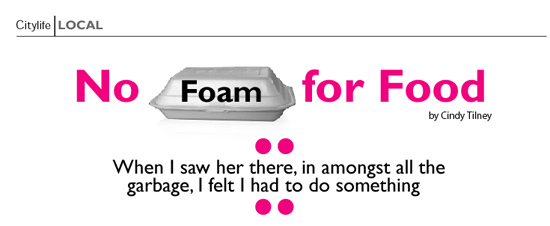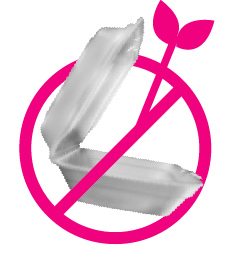
The world through the lens is a curious thing: it can blur, distort; like an infant it has a one-dimensional view of the world; yet at times it can bring the obscured, the unnoticed, into sudden brilliant clarity. When film editor Sawit Prasertphan set out to make a documentary about the Sunday Walking Street, the last thing on his mind was starting an environmental campaign but the camera told a story he couldn’t ignore.
Sawit articulates himself slowly and eloquently: he seems to value the power of language and chooses his words carefully before speaking. Dressed in slim jeans and a simple grey T-shirt, the 31-year-old speaks flawless English a skill honed during six years living in Canada. There was an element of culture shock in returning to Thailand at age 16, he says, and with fresh eyes he noticed much he might otherwise have missed including what he refers to as an ‘environmental slump’.
“In the past, local wisdom emphasised living in harmony with nature and harnessing it in a sustainable way, but in the modern market economy, people focus more on technological efficiency and competition in cost reduction, and overlook the ecosystem.”
A few years ago, Sawit and a few friends formed Muang-Muang.org and began organising cultural and creative activities that emphasised public participation. One such venture was based on the Sunday Walking Street and Sawit became intrigued by its transformation from a popular market to a regular pedestrian route over a period of 24 hours.
“Working in film and media I’m constantly looking for inspiration, and being a film editor has so much to do with storytelling, how a vision unfolds and the interplay of different layers,” he says. For me the Walking Street is fascinating in that it captures both the old and the new. ”
He decided to make a documentary to examine the street’s weekly metamorphosis, but the idea evolved as the process revealed an entirely different story.
“One Sunday as I was filming and the market was winding down, there was so much garbage everywhere,” says Sawit. “Recycling’s not really the problem Thailand has its own, very effective system. There are people who make a living from sorting and recycling garbage, as well as regular municipality workers, so between them there’s virtually no trace of the market by Monday mornings, but what was disturbing to me was how much styrofoam was lying around.”
He describes what happened next as a ‘happy accident’ that sparked the No Foam for Food concept. At about 4 a.m., a blue songtaew pulled up and an old lady got out and began setting up a stall from which to sell her homemade khao larm*. She had lived on Ratchdamnern Road for 50 odd years, but was forced to move away to Lamphun some years ago when her children sold the family home. Nevertheless she had continued to sell her khao larm from the same spot ever since, despite having to travel between one and two hours a day to reach it.

“I watched her cooking over a traditional charcoal fire and talking to passers-by she’s known for years, and I had this powerful sense of how much she identified with her original community and how much the street has changed since she was young,” explains Sawit. “There was still so much trash piled on the sidewalk that she had to sit on the street and when I saw her there, in amongst all the garbage, I felt I had to do something.”
Muang-Muang.org teamed up with Phra Kru Amorn Dhamatasana the abbot of Wat Phun Ohn, a popular eating place on the Walking Street to launch the No Foam for Food campaign, encouraging local vendors to swap styrofoam food containers for banana leaves and biodegradable ‘bagasse’ or chanoi containers made from sugar cane pulp. The campaign gained support from the owner of Biodegradable Packaging for Environment Co.,Ltd., who offered a much needed discount on the containers. At first vendors were resistant to the change, he says, because even with the discount the bagasse packaging is still twice as expensive as styrofoam. “But we discussed the issue with the vendors and finally made biodegradable packaging mandatory for those that want to sell within the temple grounds, and since people have accepted it they don’t seem to mind.”
Currently, No Foam for Food prevents the use of approximately 6,000 styrofoam containers a week roughly 24,000 a month. Sawit believes that with the help of key players in various communities, there is potential to spread the campaign to other areas of the city, or even the country. “This is a pilot project to show how this kind of campaign could be used in any market or food production setting,” he explains. “But what is essential is to look at the rhythm and dynamics of each target area so you can offer appropriate options and support. Many campaigns tend to overlook local people, who are the most important players of all they make or break projects like this.”
